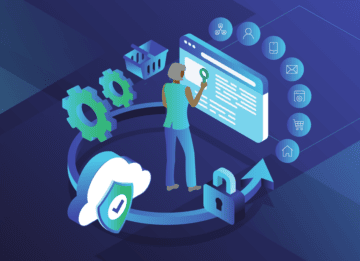Your Business is NOT Customer-Centric. Here’s Why.
Ask any C-level executive whether or not his company follows a customer-centric approach/strategy/playbook. Overwhelmingly, the response will be yes. But a deeper dive into the messaging they provide customers throughout the funnel will show you that this isn’t really the case.
The disconnect between what is perceived internally as customer-centric and the reality of your customers is a complete break down in understanding who your customer is in every stage of their engagement with your company.
Here’s an example from the real world.
Recently, I moved to a new apartment and took this opportunity to finally get a new mattress. After hearing about a mattress company on my favorite podcast, I was eager to give it a shot. I found a store, evaluated the product, and talked to the sales reps. I used a $50 discount (podcast referral code) and left with a brand new mattress.
A week later, I received an email from the company with a $100 discount for the exact mattress I bought.
If this brand knew I’d just purchased their product, they could have segmented my email address onto a separate list and not shown me the coupon. Instead, my email might have contained an offer to complete the set with sheets or a pillow. Or perhaps once I’d had time to actually try the mattress, I could have been served a retargeting campaign displaying additional products.
According to a study conducted by McKinsey, 70% of buying experiences are based on how the customer feels they are being treated. The aforementioned company made it clear that they didn’t know me, or have any desire to. Failing to personalize outreach or segment audiences can feel alienating to customers.
Here are a couple ways you may be alienating customers without meaning to:
You aren’t using the data they’ve given you
People are willing to give you quite a bit of information about themselves for a better experience. In fact, 90% of consumers are okay with brands knowing more about them if it helps deliver a more rewarding and satisfying shopping experience. It’s a value exchange between you and a potential customer. You can use this to provide a more personal experience, offering only valuable content to your prospect while helping solve their pain points along the way.
Customers don’t have a way of continuously updating you on their job changes, new addresses, or interest in a new affinity. Yet, they’d still prefer a one-to-one level of communication and consistent customer experience. It’s on brands to not only use the information from their customers but keep it accurate and up-to-date. You can invest in identity resolution to authentically connect and engage with your customers.
Your customers aren’t feeling the love
Giving customers access to special offers or discounts isn’t enough to help them feel an emotional tie to your brand. Taking transactional data, layering in social data, and adding affinity data provides a holistic identity for a customer that can truly power your messaging from awareness to advocacy.
For example, you can learn how customers are using your product or interacting with your brand on different channels. Take the case of a major airline that knew very little about their customers via their social channels. In fact, they only had transactional data and were blind to what their customers were saying about their brand across social media. They wanted to turn an anonymous Twitter handle into a person and layer additional interest and affinity data to help prioritize and respond to their customers.
Using identity resolution and audience insights, the airline tied the social identities of those individuals talking about their brand. The airline used that information to deliver a better customer experience and support retention efforts.
Your brand feels like a stranger
When a company is selling you a product, you’re being showered with attention and messaging. And once you make the purchase…crickets. Are you only ever communicating with your customers when there’s a problem or if you’re trying to upsell them? If customers only hear from you in these instances, you’re creating a negative association with your brand.
Instead, offer help in the form of how-to guides or success stories to provide inspiration and innovation with your product. Let customers see how others are using your product so they can get the full value of your offering. Fostering a relationship after the transaction can promote advocacy and evangelism for your brand and services.
Using a single customer view across your organization ensures that the information about your customer from each part of their journey is accurate, up-to-date, and will help inform the relevant communications you’ll send in the future.
Start actually being customer-centric
The more you know about your customers, the easier it is to create authentic, personal experiences that surprise and delight them. Audience data insights and identity resolution can bring your brand into a truly customer-centric approach and keep you from isolating customers and prospects.
Recent Blogs
-
 February 25, 2025 Introducing Email Signals: Unlock Powerful Email Engagement Insights Customer 360, Customer Experience, Marketing & Sales, Enrich API
February 25, 2025 Introducing Email Signals: Unlock Powerful Email Engagement Insights Customer 360, Customer Experience, Marketing & Sales, Enrich API -
 August 28, 2024 The Sales Rep's Guide to Maximizing Productivity with Website Visitor Data Acumen, Media Personalization, Marketing & Sales
August 28, 2024 The Sales Rep's Guide to Maximizing Productivity with Website Visitor Data Acumen, Media Personalization, Marketing & Sales -
 August 6, 2024 Turn Visitors into Leads: How to Install the Acumen Web Tag in 5 Easy Steps Acumen, Website Recognition
August 6, 2024 Turn Visitors into Leads: How to Install the Acumen Web Tag in 5 Easy Steps Acumen, Website Recognition